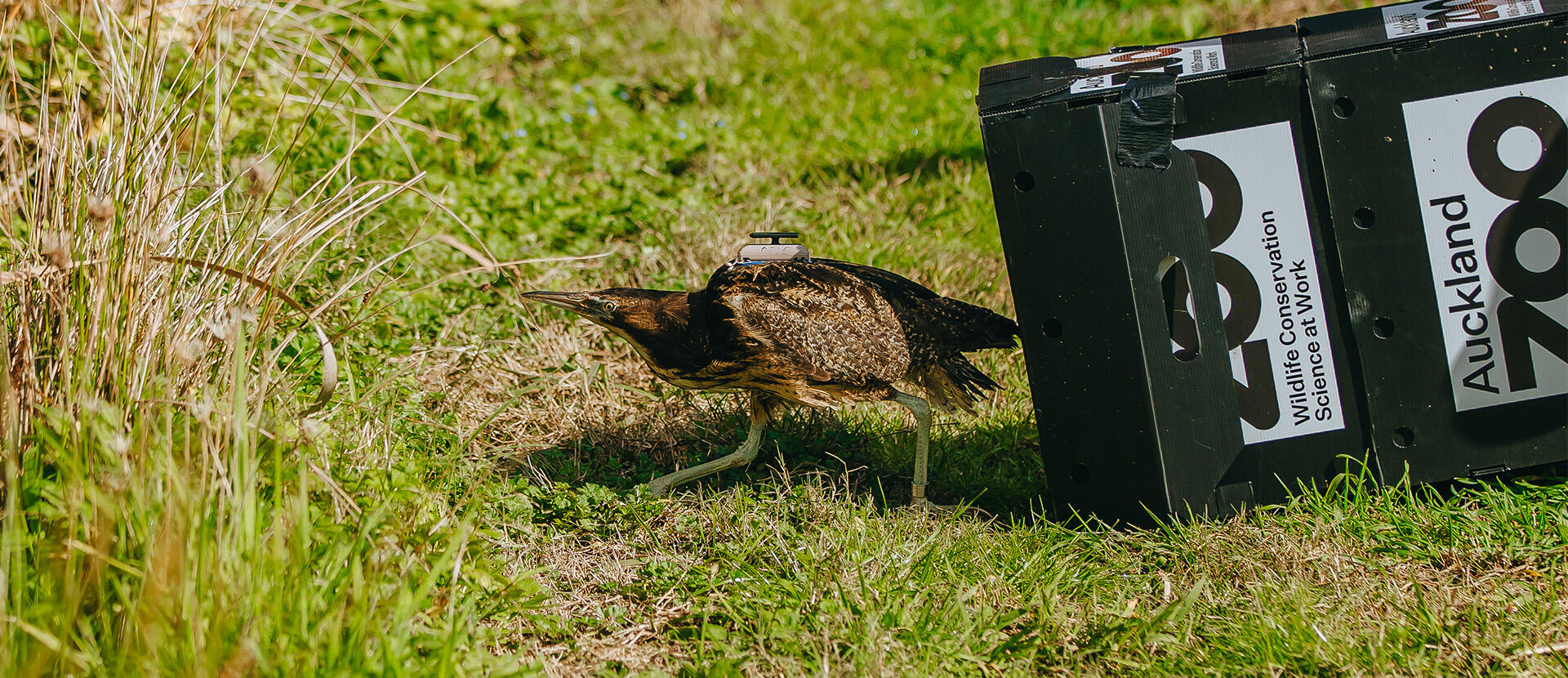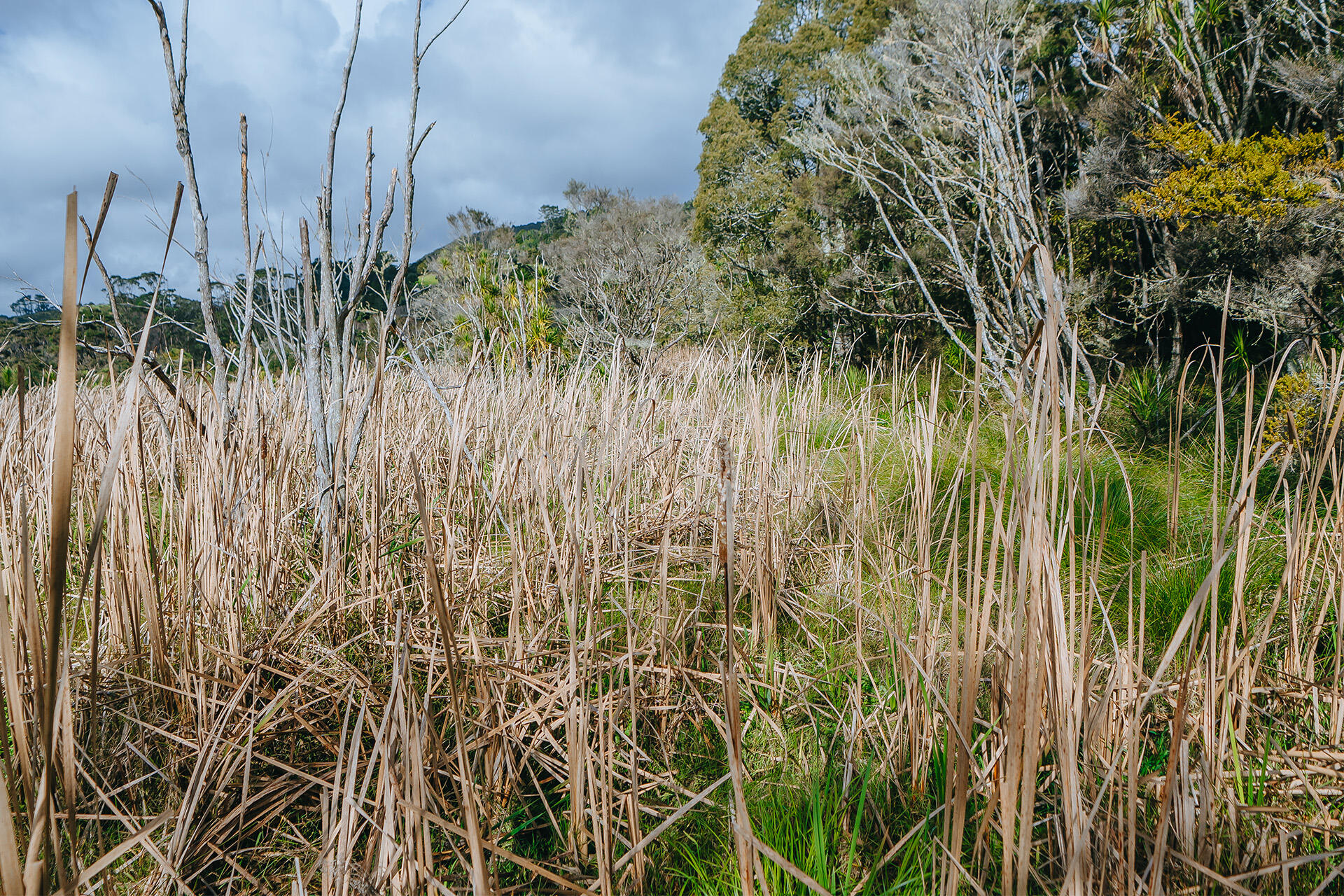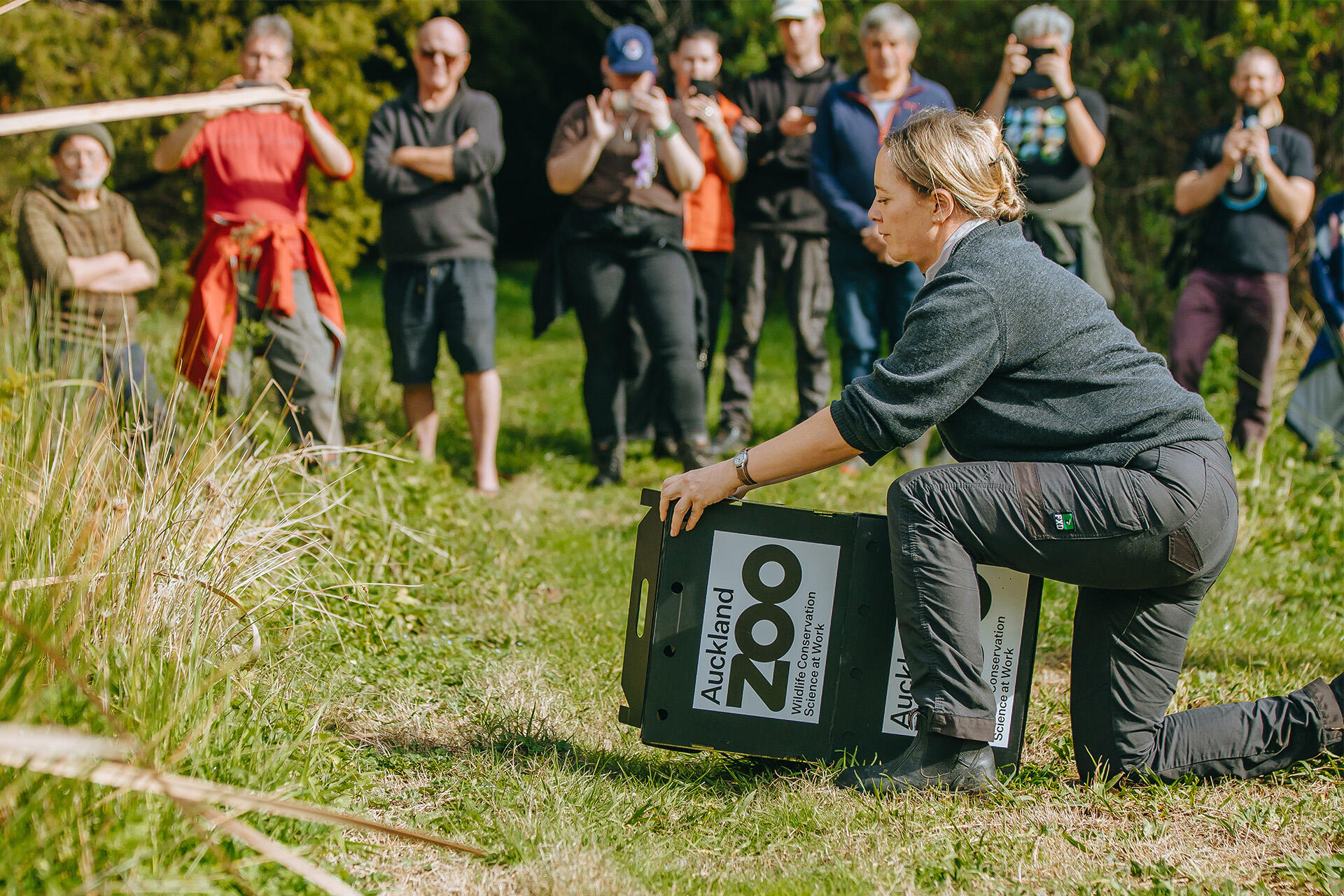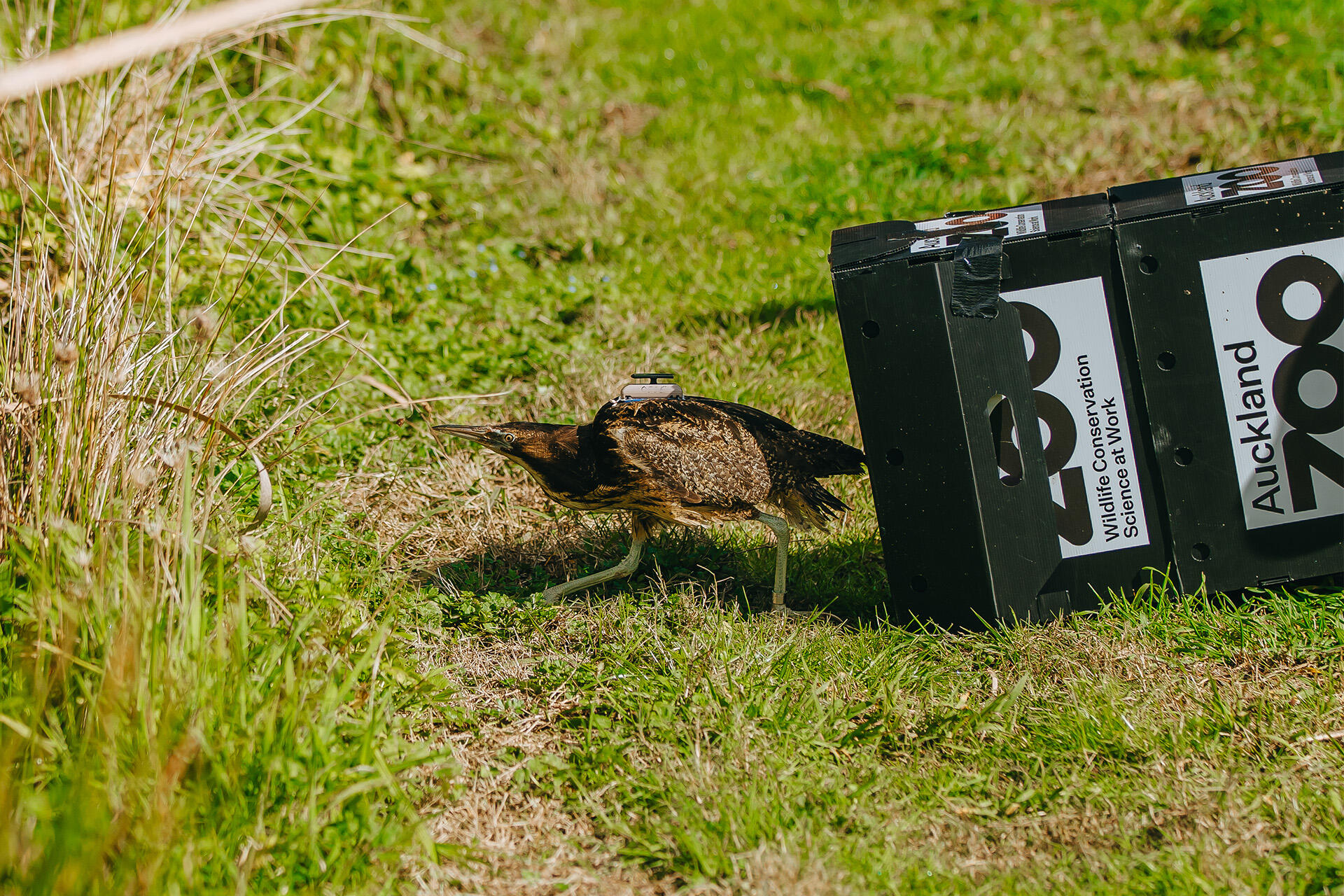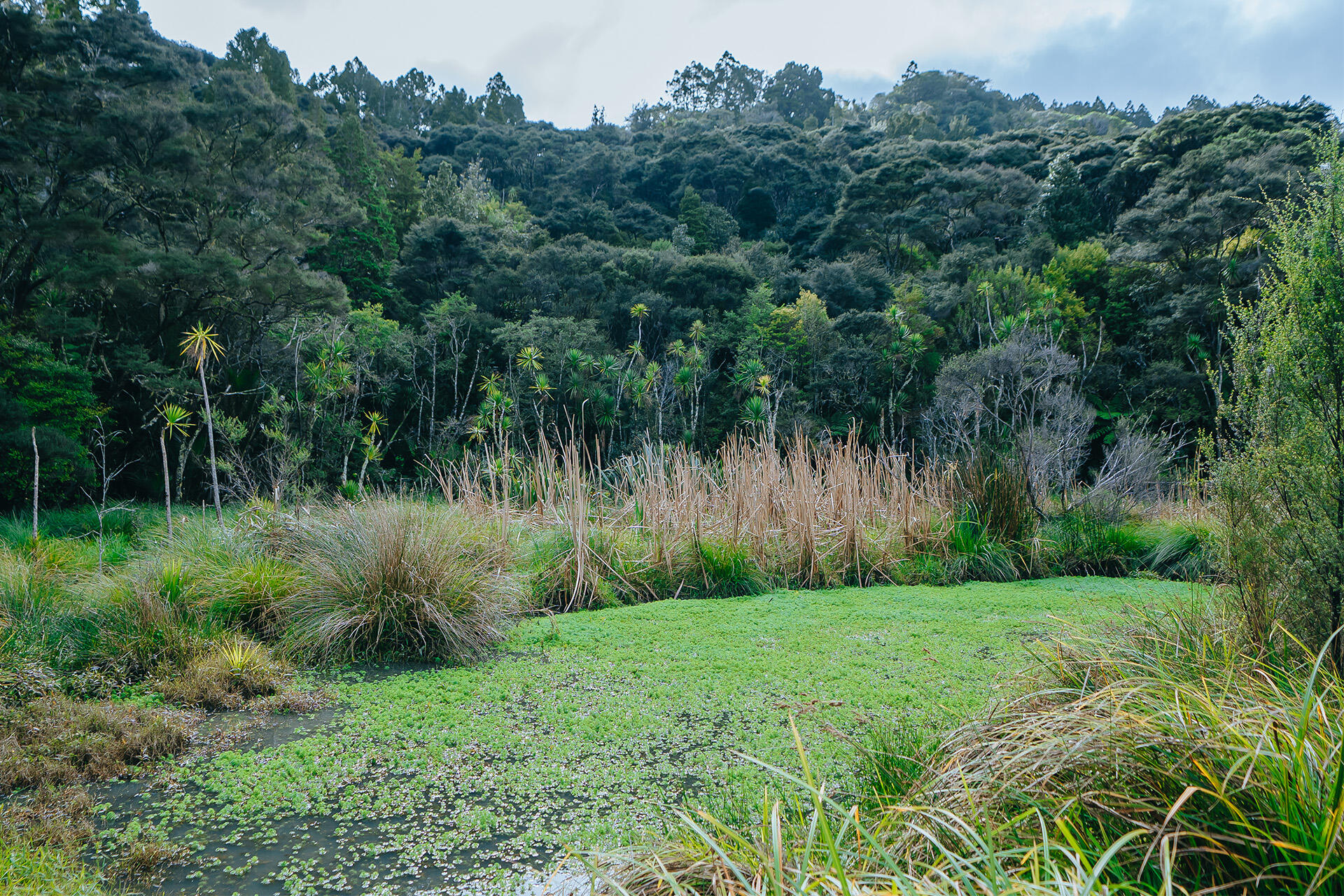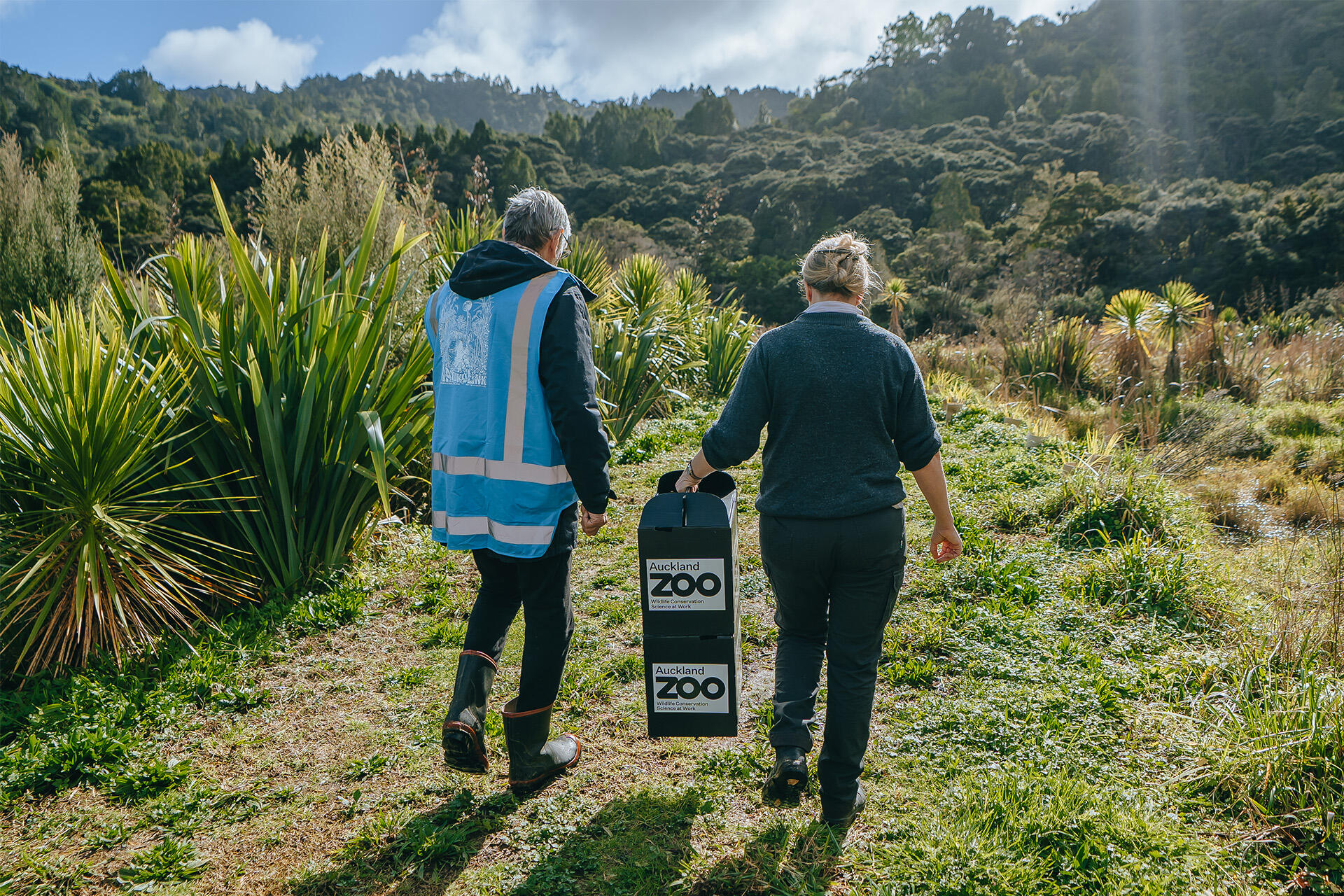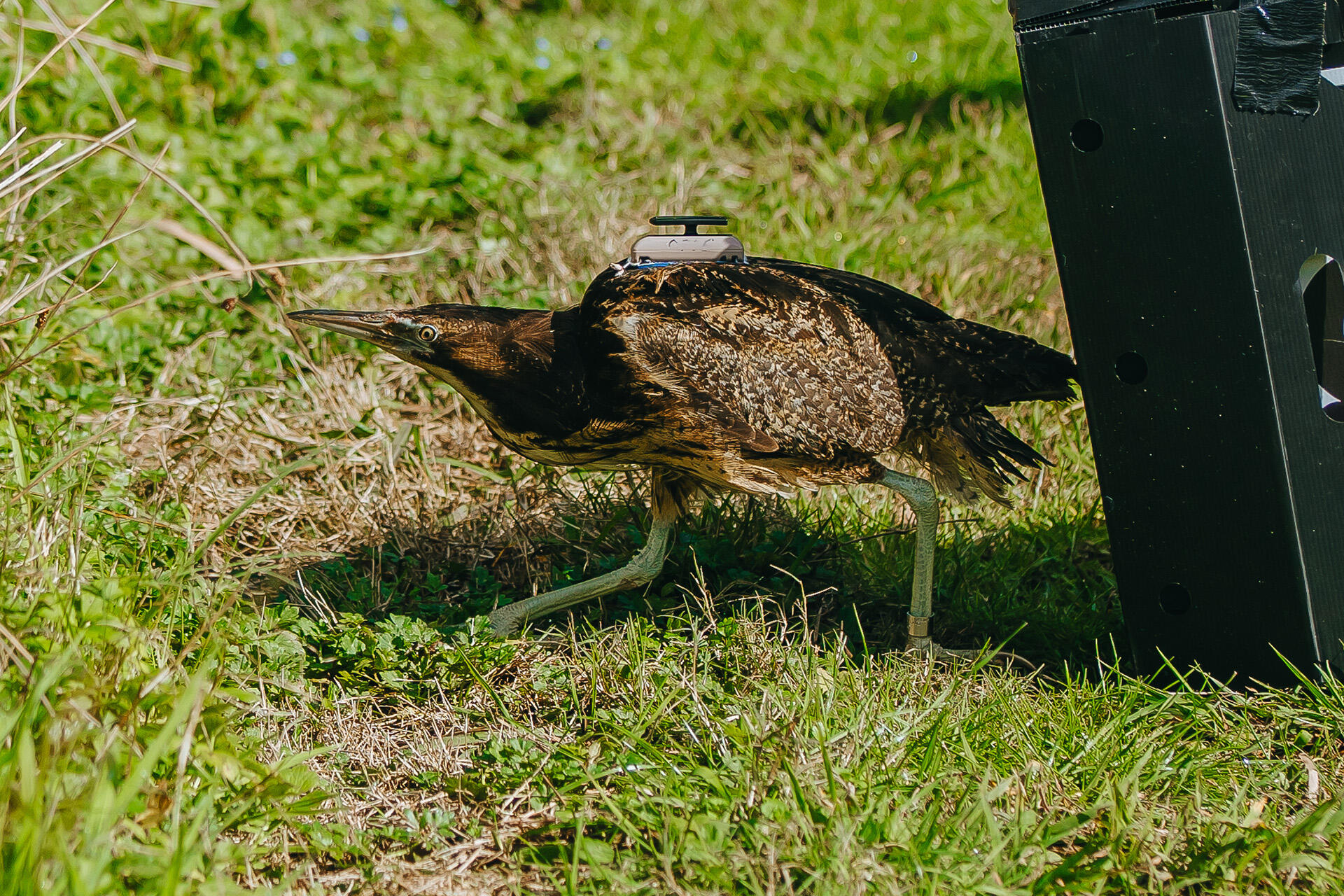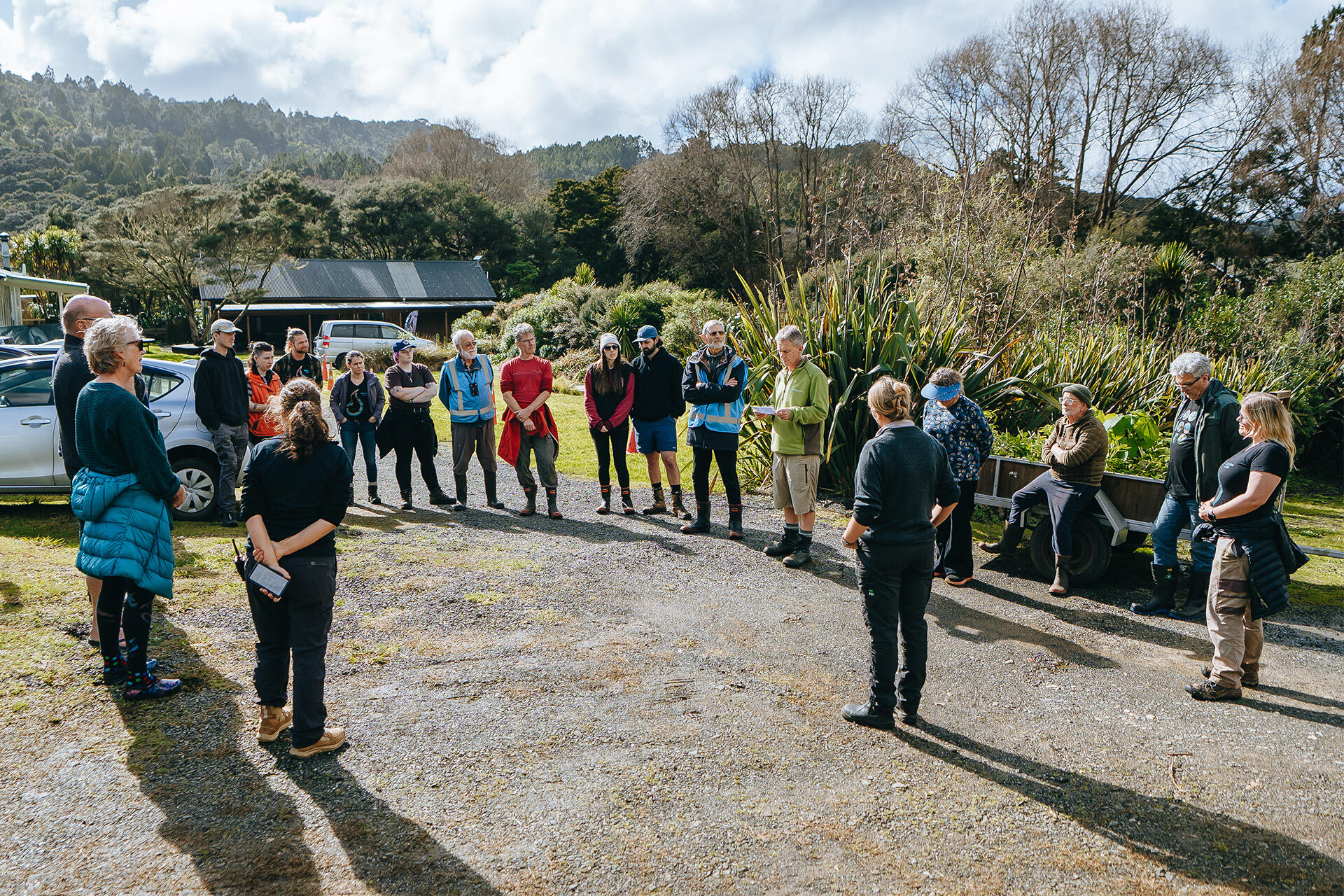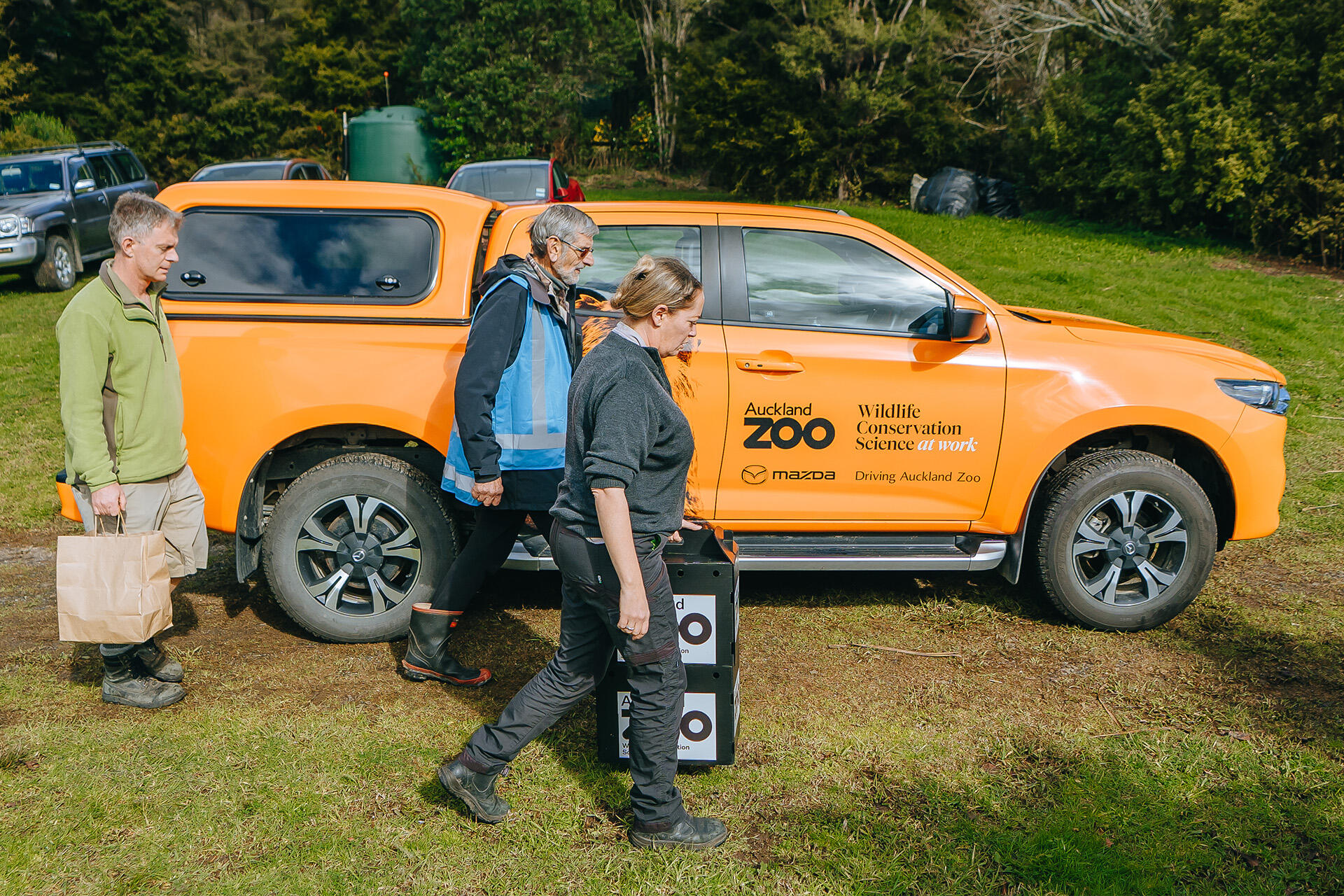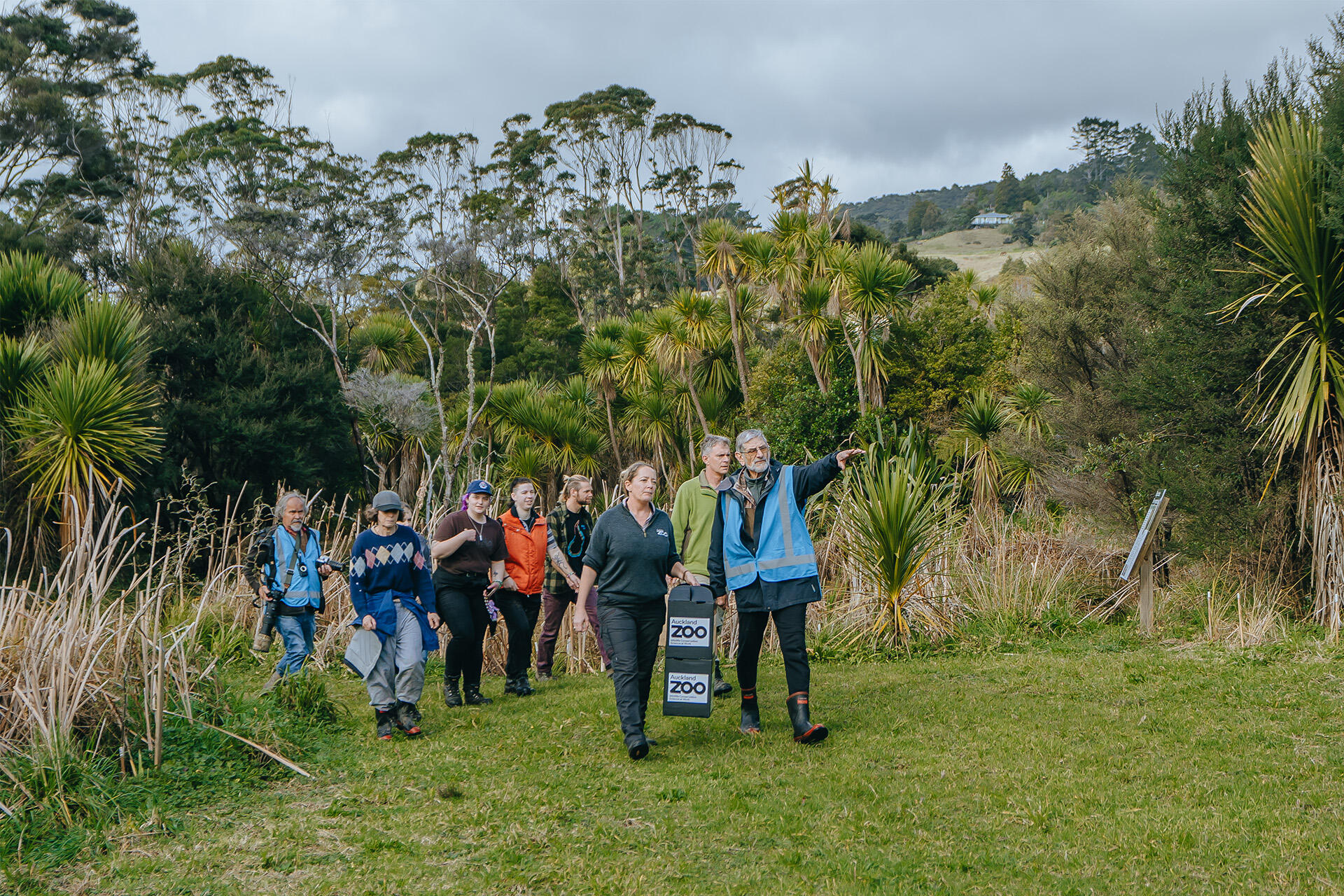A team effort of intensive supportive veterinary care, an enriching diet, and critically – providing this highly sensitive, secretive, and easily stressed bird with a quiet, private environment supported her full recovery and impressively robust release weight of 1.082kg!
“Being highly sensitive, matuku-hūrepo are notoriously difficult birds to successfully treat in human care. As a team of dedicated professionals, it’s therefore always hugely rewarding, and we all feel very proud, when our efforts lead to such positive outcomes like this,” says Auckland Zoo veterinary nurse Celine Campana, who joined our Department of Conservation (DOC) and Matuku Link colleagues, to release this individual into her new home.
“It’s also very exciting that this individual is a young female as she has the potential to breed and contribute to helping her species’ population grow.
“With an estimated population of fewer than 1000 matuku-hūrepo across their range, this is a species that needs all the help it can get. Having her released into an environment, where thanks to amazing community efforts, there is ongoing predator control and habitat restoration, and other matuku-hūrepo, gives her the very best chance of a long healthy life,” says Celine.


